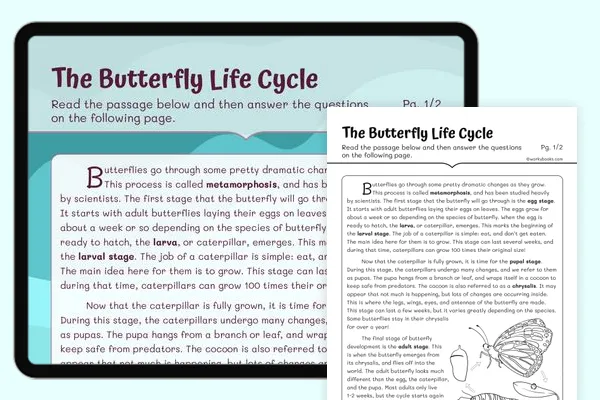The Life Cycle of a Frog — Reading Comprehension
Grades
- 4
- 5
Standards
- RI.3.1
- RI.4.4
- RI.4.2
PRINT+DIGITAL RESOURCE
This learning resource is available in interactive and printable formats. The interactive worksheet can be played online and assigned to students. The Printable PDF version can be downloaded and printed for completion by hand.
About This Reader
The frog's life cycle takes it from water to land in amazing stages. Starting as eggs, they hatch into tadpoles, grow legs, lose their tails, and develop lungs in a process called metamorphosis. Froglets leave the water and grow into adult frogs, showing how animals adapt and survive.
Perfect For:
👩🏫 Teachers
- • Reading comprehension practice
- • Auto-graded assessments
- • Literacy skill development
👨👩👧👦 Parents
- • Reading practice at home
- • Comprehension improvement
- • Educational reading time
🏠 Homeschoolers
- • Reading curriculum support
- • Independent reading practice
- • Progress monitoring
Reading Features:
📖
Reading Passage
Engaging fiction or nonfiction text
❓
Comprehension Quiz
Auto-graded questions
📊
Instant Feedback
Immediate results and scoring
📄
Printable Version
Download for offline reading
🔊
Read Aloud
Voice-over with word highlighting






















